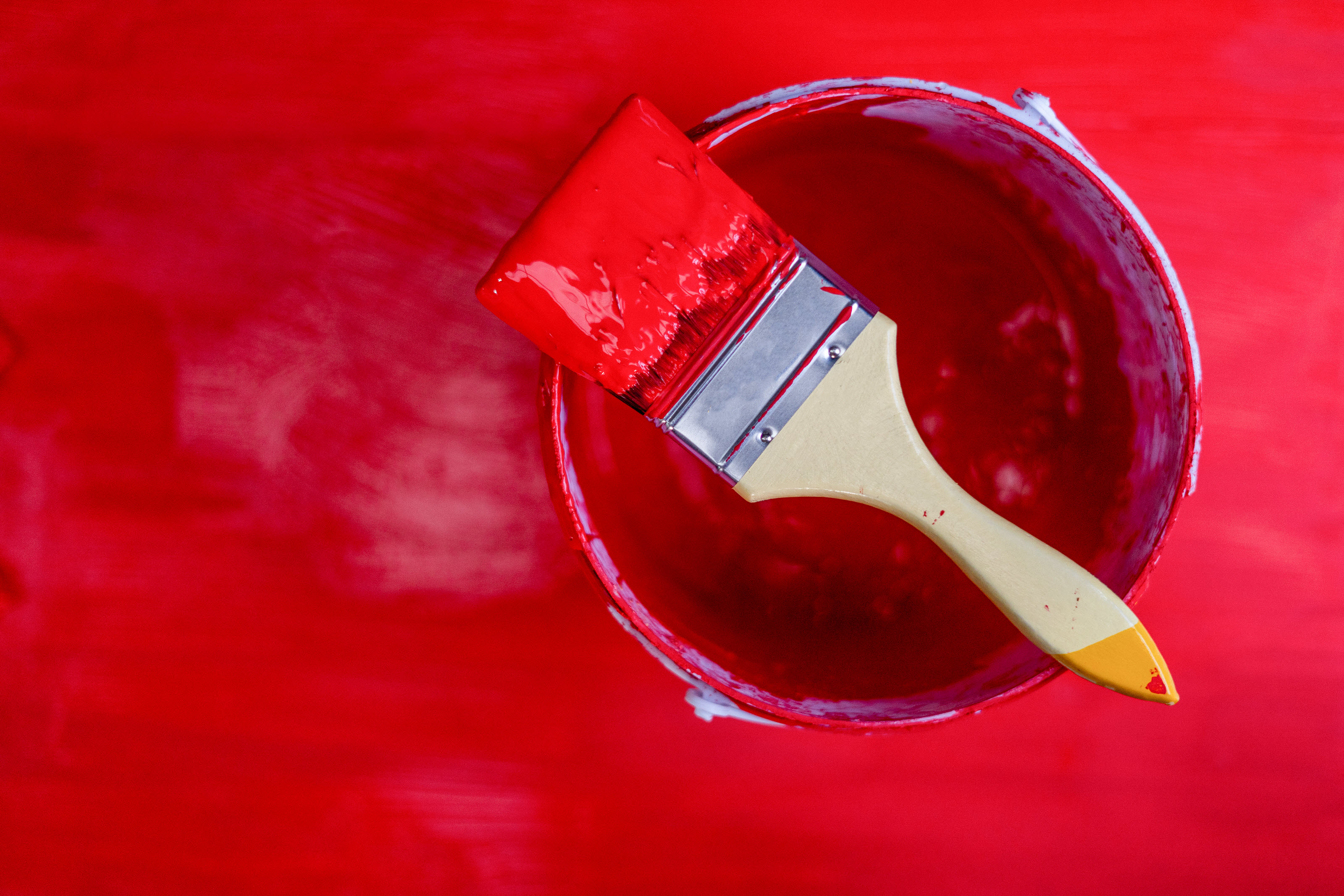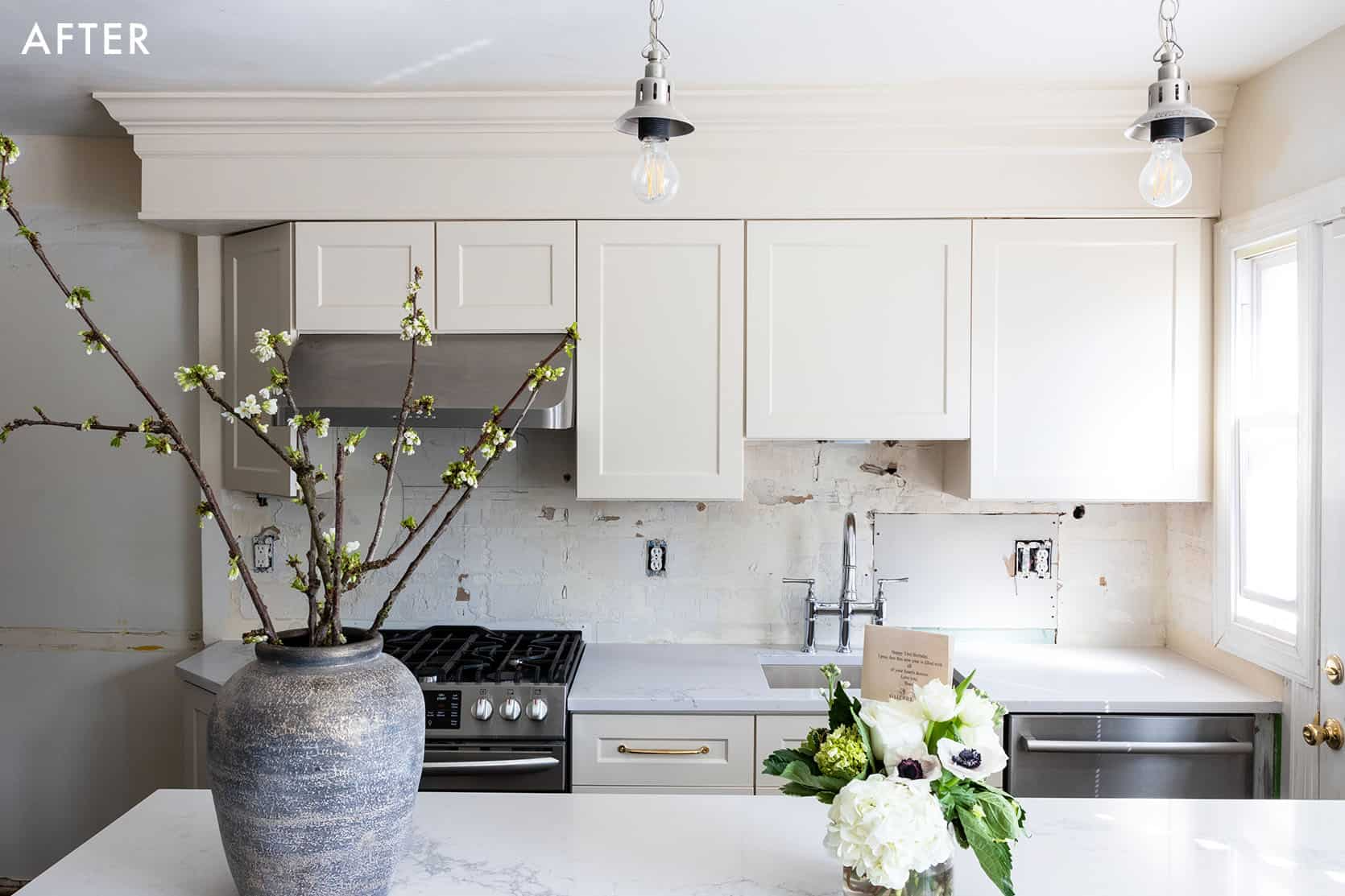Understanding Paint Sheen for Kitchen Cabinets

Choosing the right paint sheen for your kitchen cabinets is an important decision that can significantly impact the overall look and feel of your space. Paint sheen refers to the level of glossiness or reflectivity of the paint finish. Different sheens offer varying levels of durability, cleanability, and aesthetic appeal, making it crucial to understand their characteristics before making a choice.
Types of Paint Sheens
The five main types of paint sheens commonly used for kitchen cabinets are:
- Matte: Matte paint has a flat, non-reflective finish. It’s known for its ability to hide imperfections and create a sophisticated, understated look.
- Eggshell: Eggshell paint offers a slightly sheen finish, providing a subtle, soft glow without being too reflective. It strikes a balance between the flatness of matte and the shine of satin.
- Satin: Satin paint has a smooth, low-luster finish that’s slightly more reflective than eggshell. It offers good durability and is easy to clean, making it a popular choice for high-traffic areas like kitchens.
- Semi-gloss: Semi-gloss paint has a noticeable sheen, making it more reflective than satin. It offers excellent durability and is very easy to clean, making it a good option for areas prone to spills and splashes.
- Gloss: Gloss paint has the highest level of sheen, providing a high-gloss, mirror-like finish. It offers exceptional durability and cleanability but can accentuate imperfections and make the space feel more formal.
Advantages and Disadvantages of Different Sheens
The choice of paint sheen for kitchen cabinets depends on your priorities and the desired aesthetic.
- Matte:
- Advantages: Hides imperfections, creates a sophisticated and understated look, provides a warm and inviting feel.
- Disadvantages: Less durable than other sheens, more prone to showing fingerprints and smudges, difficult to clean.
- Eggshell:
- Advantages: Offers a subtle sheen, hides imperfections to some extent, easy to clean, provides a balanced look.
- Disadvantages: Less durable than satin or semi-gloss, can show fingerprints and smudges with frequent use.
- Satin:
- Advantages: Durable, easy to clean, provides a subtle sheen, hides imperfections to some extent, offers a classic and timeless look.
- Disadvantages: Can accentuate imperfections more than matte or eggshell, may not be as forgiving as matte in terms of hiding flaws.
- Semi-gloss:
- Advantages: Very durable, easy to clean, provides a bright and reflective finish, resists moisture and stains, can enhance the overall brightness of the space.
- Disadvantages: Can accentuate imperfections more than satin, may not be suitable for all kitchen styles, can create a more formal and less inviting atmosphere.
- Gloss:
- Advantages: Extremely durable, very easy to clean, provides a high-gloss, mirror-like finish, can enhance the brightness of the space, creates a sophisticated and formal look.
- Disadvantages: Can accentuate imperfections significantly, may not be suitable for all kitchen styles, can make the space feel more sterile and less welcoming.
Impact of Sheen on Kitchen Aesthetics
Different sheens can significantly affect the overall look and feel of a kitchen.
- Matte: A matte finish creates a warm and inviting atmosphere, making the space feel cozy and comfortable. It’s ideal for kitchens with traditional or rustic styles.
- Eggshell: An eggshell finish offers a balanced look, providing a subtle sheen without being too reflective. It’s suitable for various kitchen styles, including modern, contemporary, and traditional.
- Satin: A satin finish offers a classic and timeless look, making the space feel elegant and sophisticated. It’s a popular choice for kitchens with a modern or contemporary style.
- Semi-gloss: A semi-gloss finish creates a bright and reflective look, making the space feel more spacious and airy. It’s well-suited for kitchens with a modern or contemporary style.
- Gloss: A gloss finish creates a high-gloss, mirror-like finish, making the space feel more formal and sophisticated. It’s a good option for kitchens with a traditional or contemporary style.
Choosing the Right Sheen for Your Kitchen Cabinets: Paint Sheen For Kitchen Cabinets

Selecting the appropriate paint sheen for your kitchen cabinets is crucial for achieving a visually appealing and functional finish. The sheen level significantly impacts the look, durability, and ease of cleaning.
Factors to Consider When Choosing a Paint Sheen
The choice of paint sheen should be driven by various factors that influence the overall aesthetic and functionality of your kitchen cabinets.
- Existing Cabinet Style: The existing style of your cabinets can guide your sheen selection. For example, traditional cabinets often pair well with a satin or semi-gloss finish, while modern cabinets may benefit from a matte or eggshell sheen.
- Desired Level of Reflectivity: The level of reflectivity you desire plays a key role in choosing the right sheen. High-gloss sheens reflect more light, creating a brighter and more polished look, while lower sheens offer a softer, more subtle appearance.
- Amount of Natural Light in the Kitchen: The amount of natural light in your kitchen influences how the sheen appears. In kitchens with ample natural light, higher sheens can enhance brightness, while lower sheens might be more suitable for kitchens with limited natural light.
- Lifestyle and Cleaning Habits: Your lifestyle and cleaning habits are important considerations. Higher sheens are more durable and easier to clean, making them ideal for busy kitchens with frequent spills and messes. Lower sheens are more forgiving of imperfections and fingerprints, but they may require more frequent cleaning.
Comparing Paint Sheen Types
The following table summarizes the key features of different paint sheens and their suitability for various kitchen environments.
| Sheen Type | Key Features | Suitability |
|---|---|---|
| Matte | Flat finish, hides imperfections, minimal reflectivity, susceptible to stains and scratches. | Traditional cabinets, kitchens with limited natural light, less frequent cleaning. |
| Eggshell | Slightly more sheen than matte, hides minor imperfections, soft and subtle appearance, relatively easy to clean. | Traditional and contemporary cabinets, moderate natural light, average cleaning needs. |
| Satin | Moderate sheen, hides minor imperfections, warm and inviting look, easy to clean. | Traditional and modern cabinets, ample natural light, frequent cleaning. |
| Semi-gloss | Higher sheen, hides minor imperfections, durable and easy to clean, reflects light. | Modern and contemporary cabinets, ample natural light, high cleaning needs. |
| Gloss | Highest sheen, reflects light significantly, highlights imperfections, durable and easy to clean. | Modern cabinets, ample natural light, very high cleaning needs. |
Choosing the Right Sheen: A Flowchart
The following flowchart can guide you through the process of choosing the right sheen for your kitchen cabinets based on your individual needs.
- What is the existing style of your cabinets?
- Traditional: Matte, Eggshell, or Satin
- Modern: Eggshell, Satin, or Semi-gloss
- How much natural light does your kitchen receive?
- Limited natural light: Matte or Eggshell
- Ample natural light: Satin, Semi-gloss, or Gloss
- What is your desired level of reflectivity?
- Low reflectivity: Matte or Eggshell
- Moderate reflectivity: Satin or Semi-gloss
- High reflectivity: Gloss
- What is your lifestyle and cleaning habits?
- Low cleaning needs: Matte or Eggshell
- Moderate cleaning needs: Satin or Semi-gloss
- High cleaning needs: Semi-gloss or Gloss
Applying Paint Sheen to Kitchen Cabinets

The success of your kitchen cabinet paint job depends heavily on the preparation you put in before you even pick up a brush. Taking the time to properly prepare your cabinets will ensure a smooth, even finish that will last for years to come.
Preparing Kitchen Cabinets for Painting
Thorough preparation is crucial for achieving a professional-looking finish. This involves cleaning, sanding, and priming your cabinets.
- Cleaning: Start by removing all hardware, such as knobs, pulls, and hinges. Use a degreaser to remove any grease, oil, or dirt from the cabinet surfaces. Wipe down the cabinets with a damp cloth and allow them to dry completely.
- Sanding: Sanding helps to create a smooth surface for the paint to adhere to. Use fine-grit sandpaper (120-180 grit) to smooth out any imperfections or rough spots. Focus on areas with rough textures or previous paint layers. Sanding also helps to create a slightly rough surface, improving paint adhesion.
- Priming: Applying a primer is essential, especially when painting over dark colors or bare wood. Primer helps to seal the surface, prevent bleed-through, and create a uniform base for the paint. Choose a primer specifically designed for kitchen cabinets, as it will provide better adhesion and durability.
Applying Paint Sheen to Kitchen Cabinets
The method you use to apply paint will depend on the type of sheen you’ve chosen.
- Flat and Eggshell: These sheens are best applied with a brush or roller. For a brush, use long, smooth strokes in the same direction. For a roller, use a high-quality roller cover and apply even pressure. Avoid overloading the brush or roller, as this can lead to drips and uneven coverage.
- Satin and Semi-Gloss: These sheens can be applied with a brush, roller, or spray gun. For a brush or roller, use the same techniques as for flat and eggshell. When using a spray gun, use a light, even coat and avoid over-spraying.
- Gloss: Gloss paint is best applied with a spray gun. Use a light, even coat and avoid over-spraying.
Tips and Tricks for Avoiding Painting Mistakes, Paint sheen for kitchen cabinets
Here are some helpful tips to avoid common painting mistakes:
- Brushstrokes: To avoid brushstrokes, use long, smooth strokes in the same direction. Avoid going back over the same area multiple times, as this can create visible brush marks.
- Drips: To prevent drips, load your brush or roller with a small amount of paint. Don’t overload it, as this will lead to dripping. If you do get a drip, clean it up immediately with a damp cloth.
- Uneven Coverage: To ensure even coverage, apply thin, even coats of paint. Avoid applying thick coats, as this can lead to uneven coverage and cracking.
- Dust: Dust can ruin a paint job. Keep your work area clean and dust-free. Use a tack cloth to remove any dust particles before painting.
The choice of paint sheen for kitchen cabinets is a significant decision, impacting both aesthetics and functionality. A satin sheen offers a balance of durability and a subtle sheen, while a semi-gloss sheen provides a more polished look and is easier to clean.
To enhance the overall kitchen experience, consider implementing soft-close cabinet door hinges, which ensure a smooth and silent closure. Soft close cabinet door hinge adjustment can be easily adjusted to ensure optimal performance, and when paired with the right paint sheen, contributes to a refined and functional kitchen space.
The choice of paint sheen for kitchen cabinets is a crucial decision, influencing both the aesthetics and functionality of the space. A high-gloss finish, for example, can create a modern and reflective look, while a matte finish offers a more traditional and understated feel.
When selecting cabinet hardware, such as 4 inch cabinet door handles , it’s important to consider the sheen of the cabinet paint to ensure a cohesive design. For example, a high-gloss paint may be better suited to sleek and modern handles, while a matte finish could complement more rustic or traditional hardware.
